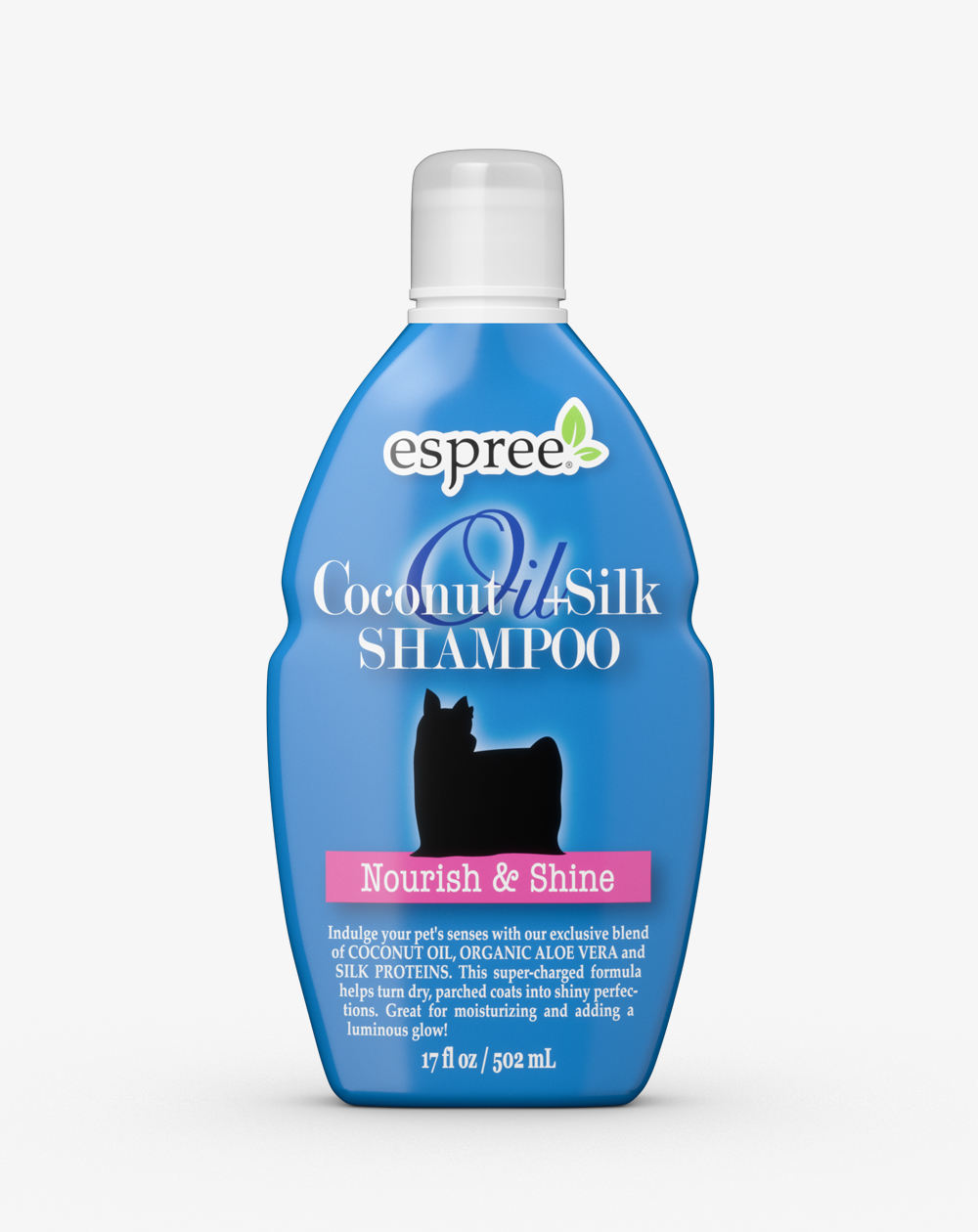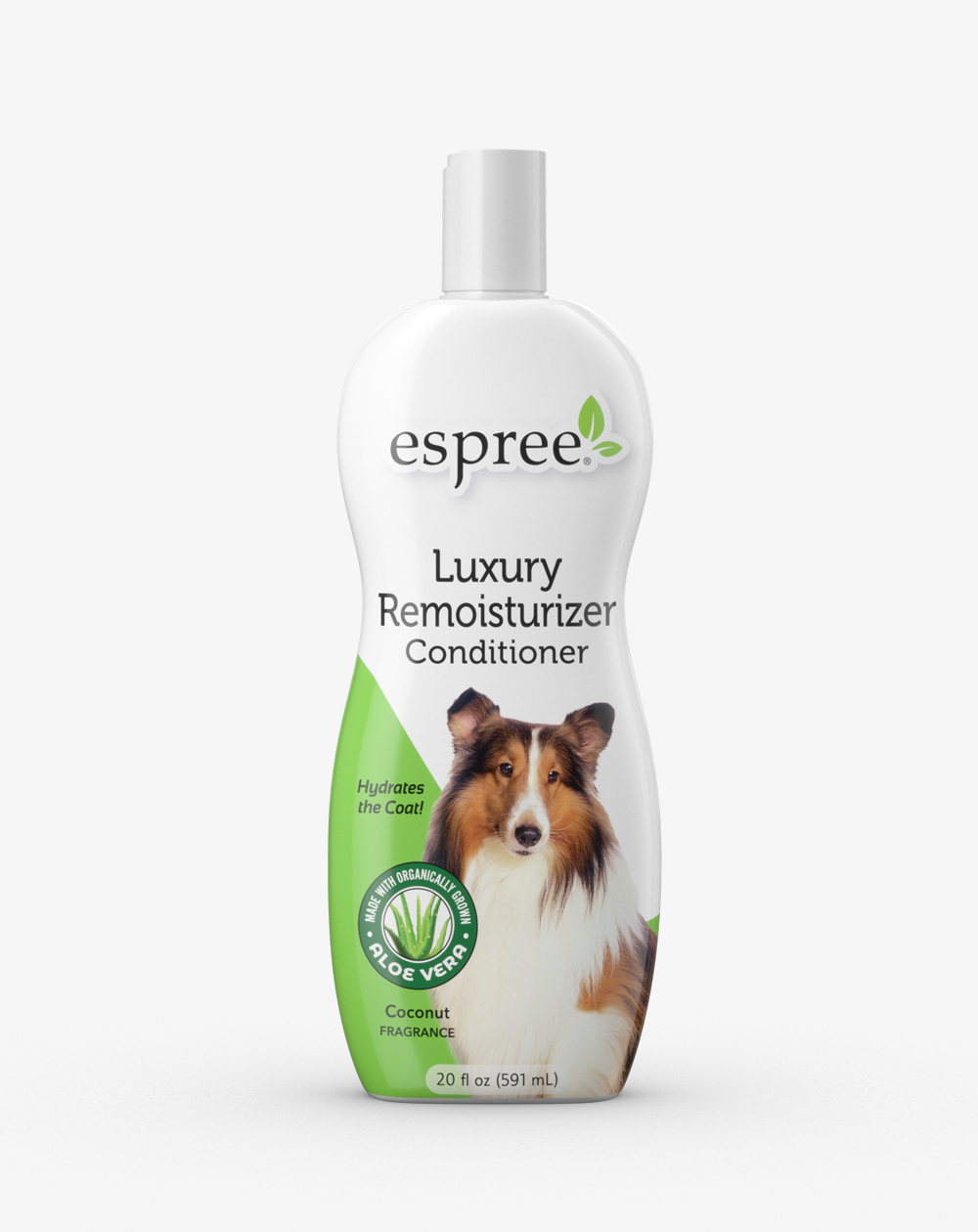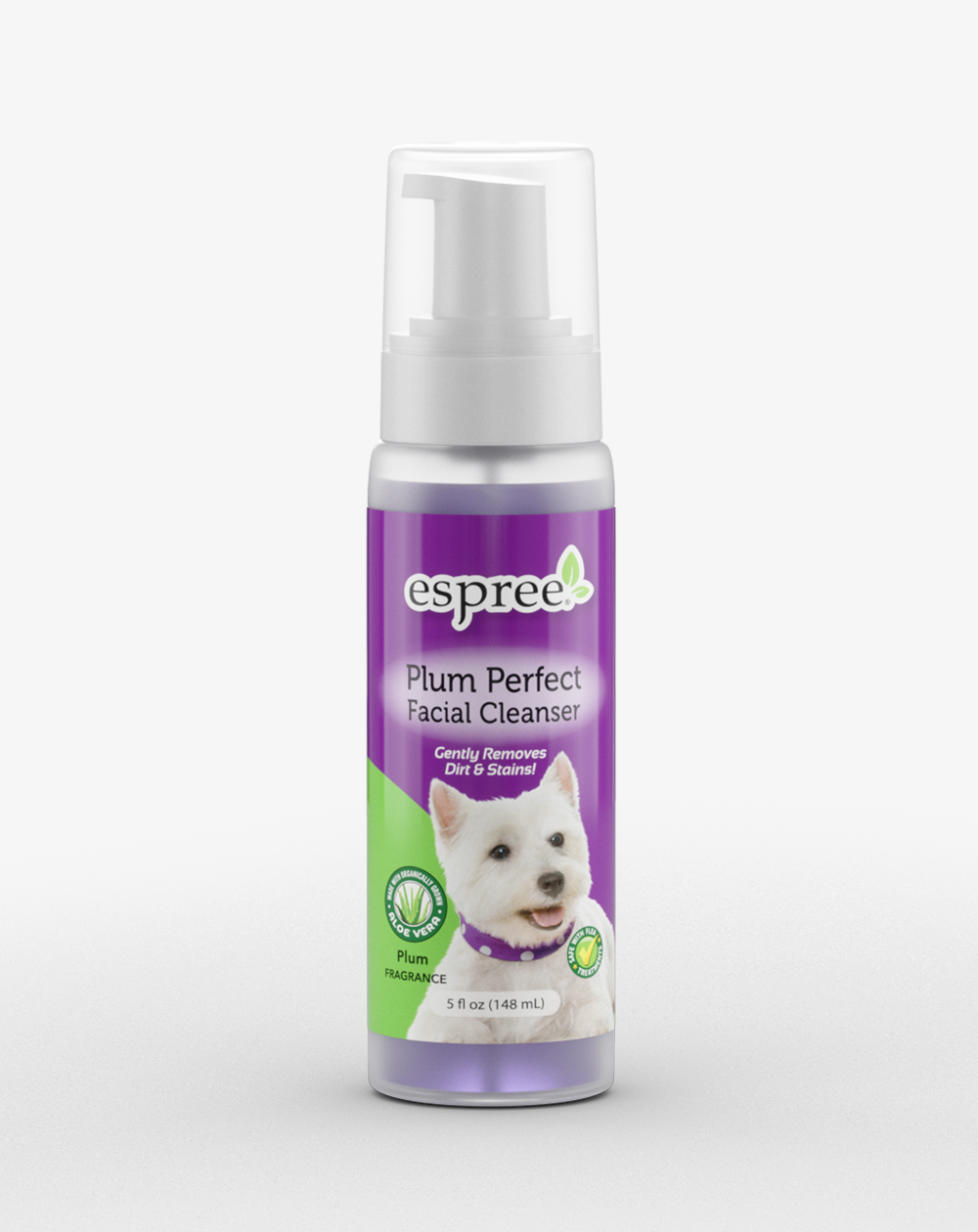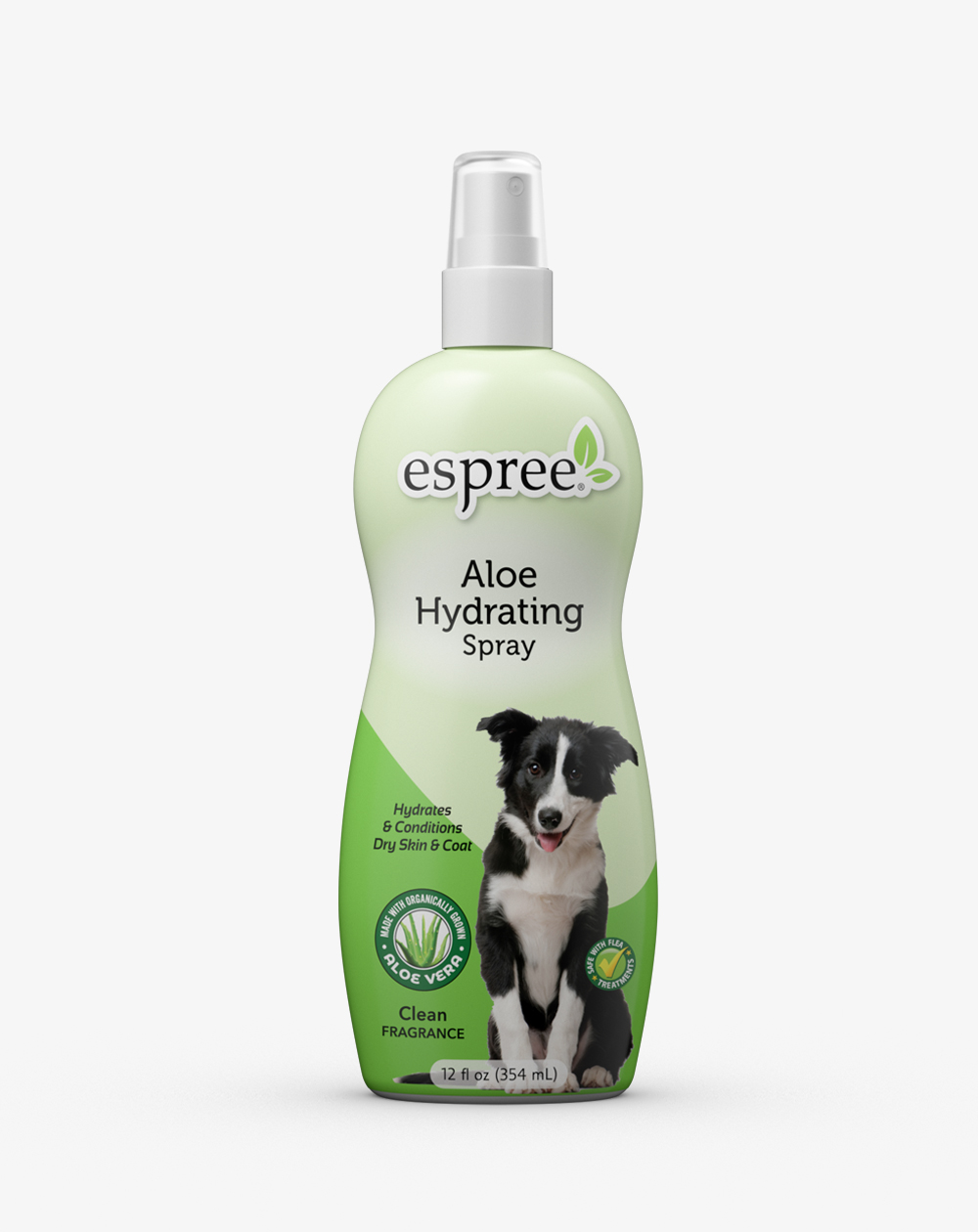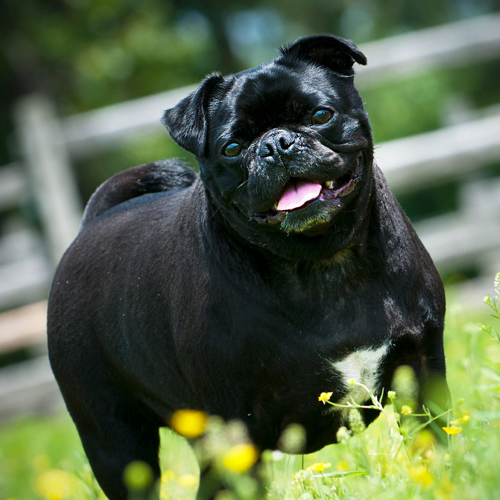
Pug
The Pug is well described by the phrase "multum in parvo" which means "a lot of dog in a small space." They are recognized for their even-tempers, playful personalities, and their outgoing, loving dispositions. This square and cobby breed comes in fawn, silver fawn, apricot fawn or black, with a well-defined "mask" on his muzzle. A popular companion dog, the pug also excels in the show ring.
Breed Profile
The Pug’s reason for living is to be near their people and to please them, and their sturdiness makes them a family favorite. They are comfortable in small apartments because they need minimal exercise, but the breed can adapt easily to all situations. The Pug sheds, but its short coat requires little grooming.
Grooming
A Pug does require regular bathing and grooming. This outgoing and loving little dog can be bathed as frequently as every week up to no more than every six weeks depending on his lifestyle. With this short-coated breed, regular bathing is essential to maintain healthy skin and coat. Selecting the correct products to match your pet’s skin and coat is essential to achieve optimal results.
Before bathing your Pug, it is recommended to go over the dog’s entire body with a high velocity dryer in order loosen any dirt and dander from the skin and remove any excess loose coat. Lightly card the coat to help accelerate shedding. Once you have selected the best products for your Pug, it is bath time!
Finishing the Dog: Tools and Finish Grooming
This playful dog should be bathed on a regular basis. Use a grooming mitt and massage in a circular motion to stimulate the release of natural oils. This will also aide in the removal of any excess, loose hair. In order to keep the fine, smooth coat in prime condition, it is always beneficial to use a hydrating spray following the bathing and drying process. This allows the skin and coat to lock in moisture to help maintain perfect hydration.
General Health Care
Prep work is the foundation of all grooming. Prep work includes ear cleaning, nail trimming, anal glands, and proper dental hygiene. Mastering these skills sets the professional pet stylist apart from the rest. Prep work should be done before every bathing and grooming appointment. All dogs need to have their ears checked and cleaned on a regular basis. Proper nail care is also very important. Long, unsightly nails are uncomfortable for the dog, as well as anyone they might jump on. Long nails also compromise the shape of the foot. Trimming the pads of the foot helps give the dog good traction on different surfaces and can minimize the amount of dirt the dog tracks into the house. It also affords the opportunity to treat and condition the paws from cracks and abrasions. Anal glands should also be checked and expressed if they are full. Some caring pet owners prefer to have the anal glands done by their veterinarian. Good dental hygiene is essential for a healthy pet as well.
Nutritional Care
In order to maintain healthy skin and coat as well as overall health, it is important to provide good nutrition to your dog through a well-balanced diet, vitamins, and healthy treats.
Do they require a lot of grooming?
If you are not a fan of cutting hair, then you have made the right selection of choosing a Pug. This smooth, short coated, even tempered little dog requires minimal grooming. This breed can sometimes produce a natural body oil that creates a “doggie odor”. Regular baths are necessary to help keep this under control.
What is a common problem in Pugs?
The Pug, like other purebred dogs, has its fair share of health concerns. In general, the eyes, skin, orthopedics, and brain are the primary focal points for health concerns. Corneal Ulcers, Dry Eye, and Proptosis (abnormal protrusion or displacement of an eye) are more common eye problems in Pugs. They are also prone to several skin issues such as allergies, Demodectic Mange, Staph and Yeast infections, and Celestially (which is also known as Walking Dandruff). Some serious problems that can occur in the brain or central nervous system are Epilepsy, Nerve Degeneration, and Pug Dog Encephalitis (PDE).
Do Pugs shed or cause allergies?
Pugs do shed quite a bit to their short coat. This breed is probably not the best dog to bring into your home if you suffer from allergies. However, if your heart is set on a Pug, you should spend some time around the breed to make sure you do not have an allergic reaction.
Are Pugs good with children?
Pugs and children make a great pair. However, there are a few things to be aware of when having a small child and a Pug. Pugs are prone to eye injuries so be careful with the “rough housing”. Pugs are susceptible to breathing problems and this is compounded in hot weather. Making sure your Pug always has plenty of fresh water and does not over exert themselves is not a natural thing for children to be aware of. And lastly, Pugs will eat anything and everything. A child will need to be taught what a dog should and should not eat. On the positive side, a Pug can be a great playmate and a great companion for a child.
What if I have a show dog?
Whether you have a show dog or a companion quality dog, the same basic care is given regarding nutrition, socialization, and hygiene. The difference is the conditioning of the dog and conformation training. It is always quite helpful if your breeder can help mentor you to lead you in the right direction upon entering the wonderful world of dog shows. A great place to start is with the national breed club like the Pug Dog Club of America, www.pugdogclubofamerica.com.

